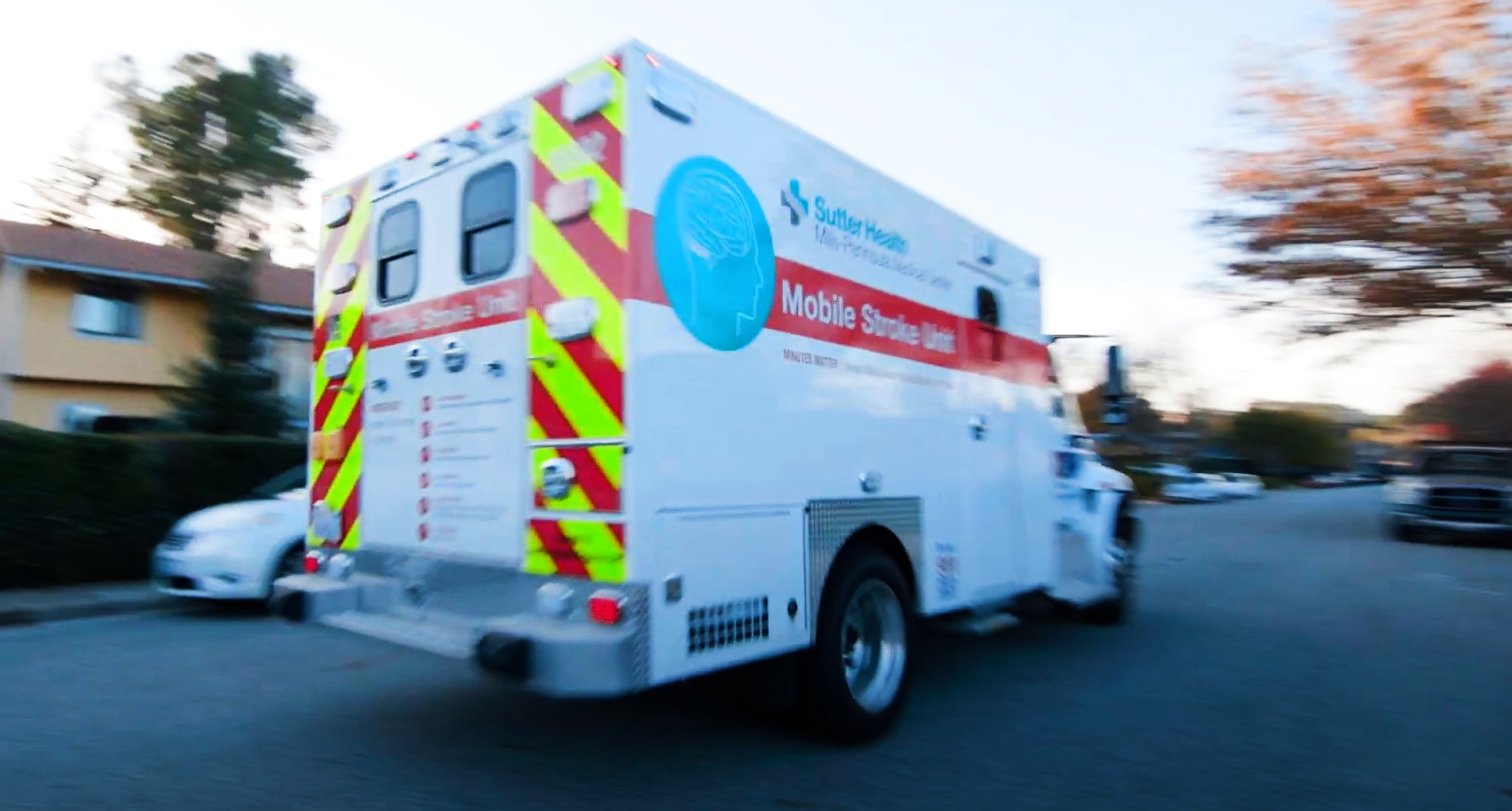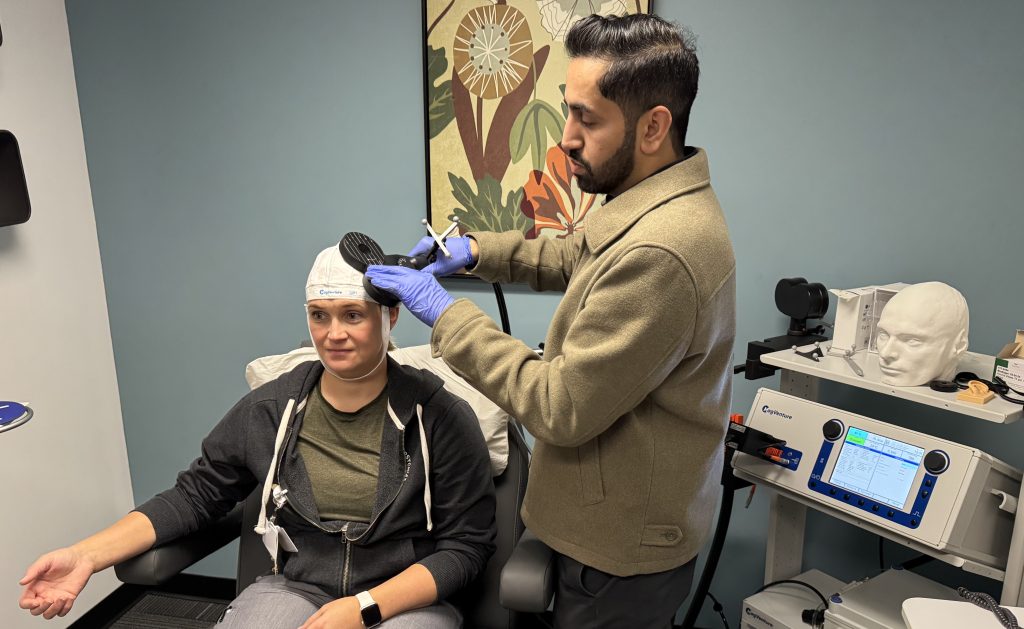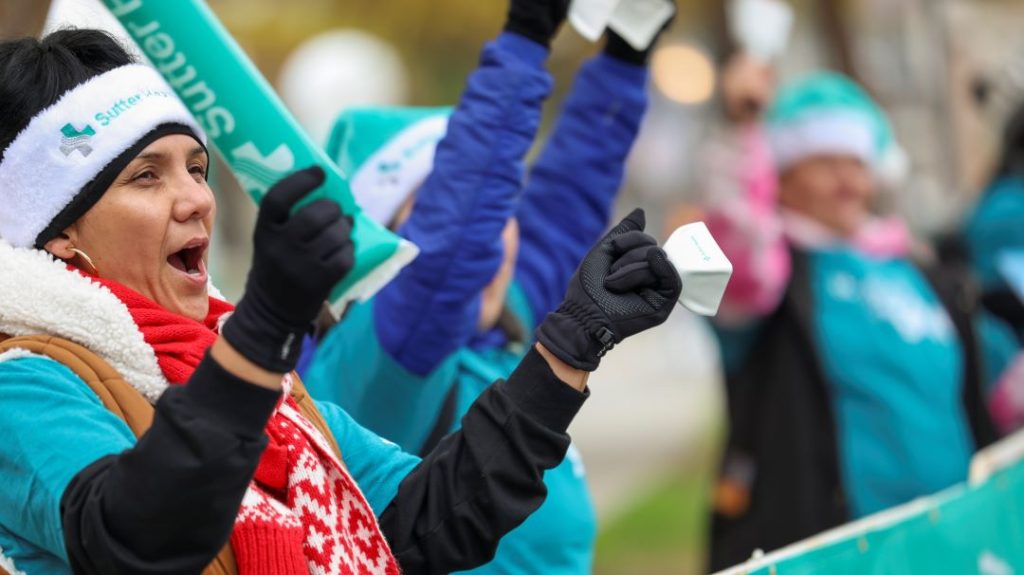From the moment stroke symptoms appear, the race is on. Get the right treatment within the first 60 minutes and you may make a complete recovery. Miss this narrow time window and you could suffer irreversible brain damage, leading to lifelong disability or even worse.
Recently, the New England Journal of Medicine published data from Sutter Health and others showing how a mobile stroke unit (a specialized stroke ambulance or MSU) accelerated stroke treatment and led to reduced disability among stroke survivors. The study is the first large-scale, prospective, controlled trial in the United States to compare clinical outcomes from an MSU to standard care by emergency medical services.
The research revealed that patients treated in an MSU received a clot-dissolving drug (tissue plasminogen activator, or tPA) more often. Additionally, patients received tPA more promptly and were less likely to have long-term disability following their stroke.
“We believed that bringing stroke treatment to the patient using a Mobile Stroke Unit would help more people get treatment, get it faster, and be more likely to return to their normal lives,” said Ilana Spokoyny, M.D. clinical and research director for the Mobile Stroke Unit at Mills-Peninsula Medical Center. “The trial results have confirmed our belief and given us powerful evidence to support the investment in this technology.” The costs to purchase Sutter’s unit and operate it for the initial two-year pilot were covered by generous donations to the Mills-Peninsula Hospital Foundation.
Research Highlights
Patients were more likely to fully recover.
- Over half of patients (55%) in the MSU group were able to return to normal lives and activities within three months of their stroke.
- This represents nearly a quarter more patients (23.8% increase) with little or no disability at 90 days post stroke, compared to the standard care group.
- These results mean that, on average, for every 100 patients treated on an MSU, 27 will experience less disability following their stroke than they would have if they’d received standard care. Furthermore 11 of the 27 will have no disability 90 days after their stroke.
Patients received treatment faster.
- A third of patients (32.9%) in the MSU group were treated within 60 minutes of stroke onset compared to very few patients (2.6%) in the standard care group.
- The median time from stroke onset to initiation of treatment was 36 minutes shorter in the MSU group compared to the standard care group (72 minutes vs. 108 minutes).
- This potentially saves seventy-two million brain cells, as approximately two million brain cells die each minute that blood is not freely flowing to the brain.
Patients were more likely to receive treatment.
- Almost all eligible patients (97.1%) in the MSU group received the clot-busting medication tPA, compared to 79.5% of patients in the standard care group.
- This represents nearly a quarter more patients (22.1% increase) who were able to receive timely treatment, compared to the standard care group.
The published research is part of the ongoing, federal Patient Centered Outcomes Research Institute funded BEST-MSU study. The team of researchers are now working to assess the cost effectiveness of MSUs by tracking what health care services (hospitalization, rehabilitation, skilled nursing care, etc.) patients need during the first year after their stroke. With the mean lifetime cost of ischemic stroke at approximately $140,048 and care for the first year post-stroke approximately double the cost of the initial hospitalization, treatment in an MSU is hypothesized to result in a lower total cost of care compared to standard EMS care, by delivering better clinical outcomes that minimize the need for ongoing care.
The Next Mile
Equipped with a CT scanner, point-of-care lab testing equipment, and personnel trained to diagnose stroke, MSUs enable medical teams to start treatment with tPA at the scene and continue it in route to the hospital. But increasing the speed and frequency of treatment with tPA isn’t the only potential advantage of an MSU.
A stroke neurologist, either on board or connected through telemedicine, can use the CT images to identify the exact cause and severity of a stroke. This information can lead to more informed triage and transport decisions and greater treatment options for patients.
For example, patients who have a clot in a large vessel can be driven to a hospital that is staffed by experts who can manually remove it. Getting patients to the appropriate hospital for their medical need, the first time, is anticipated to save considerable time that is otherwise lost during hospital-to-hospital transfers.
Beyond stroke, MSUs also have clinical and research applications that could benefit other patients who require time-sensitive neurological care.
All the advantages of the MSU can’t eliminate delays in stroke care that result when people don’t identify the signs of stroke or call 911 right away. Increasing public awareness of stroke symptoms is critical to ensure that patients receive the fastest possible treatment when a stroke does occur.
To spot a stroke, the National Stroke Association recommends that everyone learn to act F.A.S.T. which stands for:
- Face—Does one side of the face droop when the person smiles?
- Arms—When the person raises both arms, does one drift downward?
- Speech—Does the person slur words or sound strange when asked to repeat a simple phrase?
- Time—Call 911 immediately if you see any of these warning signs of stroke.
For more on research and clinical trials at Sutter Health, go to sutterhealth.org/research.





